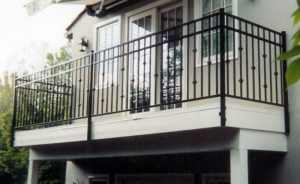Reference Guide for Designing and Installing Balcony Railings
Balconies are a wonderful addition to any home or building, providing a private outdoor space for relaxation and enjoyment. However, safety is paramount in balconies, and one of the most important safety features is the railing. Balcony railings not only provide protection but also enhance the aesthetic appeal of your outdoor space. This reference guide will help you navigate the ins and outs of designing and installing balcony railings.
1. Legal and Safety Requirements:
Before you embark on your balcony railing project, it’s crucial to research and understand local building codes and regulations. Different regions may have specific requirements for balcony railings, including height, spacing, and materials.
2. Material Selection:
Balcony railings can be constructed from various materials, each with aesthetic and practical considerations. Some common materials include:
Wood: Wooden railings offer a classic and warm appearance. They can be stained or painted to match your overall design. However, wood is perishable, so it needs to be replaced and maintained frequently.
Metal: Metal railings, such as wrought iron, steel, or aluminum, are durable and low-maintenance options. They can be designed in traditional, modern, or many other different styles.
Glass: Glass railings provide an unobstructed view and a modern, sleek look. They are excellent for balconies with scenic views. Safety glass is essential to prevent shattering.
Composite Materials: Composite materials like PVC, vinyl, or fiberglass offer a combination of durability and low maintenance. They can mimic the appearance of wood without the need for regular upkeep.
Cable Railing: Stainless steel cable as a railing panel can create a modern style. They are ideal for balconies where an uninterrupted view is desired.
Consider your budget, the climate in your area, and the desired aesthetic when selecting the material for your balcony railing.

3. Height and Spacing:
The height and spacing of your balcony railing should meet local building codes. Typically, the railing height should be a minimum of 36 inches for residential balconies. Ensure that the spacing between balusters or pickets is narrow enough to prevent children from slipping through.
4. Maintenance:
Proper maintenance is essential to ensure the longevity of your balcony railing. It is necessary to check regularly for corrosion or damage. The required maintenance will vary depending on the material you choose.
5. Enhancements:
Consider adding lighting, planters, or decorative elements to enhance the functionality and visual appeal of your balcony railing. These additions can make your outdoor space more inviting and enjoyable.
Designing and installing balcony railings is a multifaceted task that involves safety, aesthetics, and functionality. By understanding the legal requirements, selecting the right materials and design, and ensuring professional installation and maintenance, you can create a beautiful and safe outdoor space that you’ll enjoy for years. Balcony railings are more than just a safety feature; they can be a stunning addition to your home’s architecture.

 +86 159 6420 9667
+86 159 6420 9667  sales@haxrailing.com
sales@haxrailing.com 



